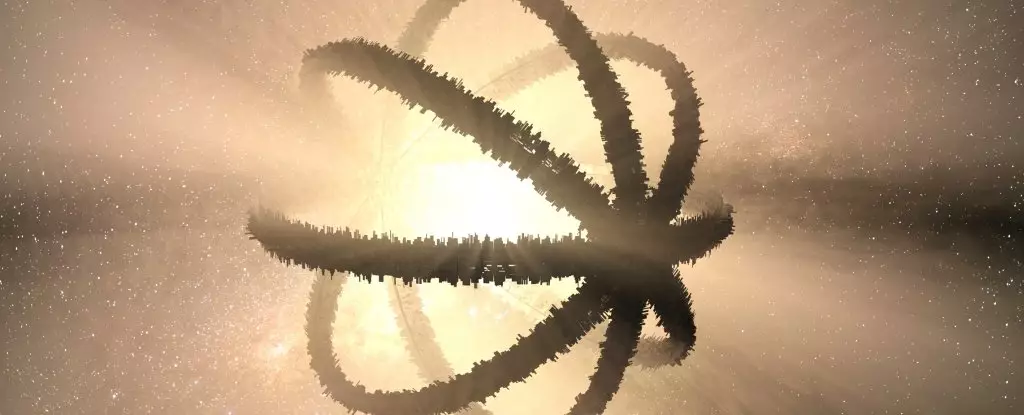The concept of Dyson Spheres has captured the imagination of scientists and science fiction enthusiasts alike as a potential indicator of advanced alien civilizations. Freeman Dyson first proposed the idea in 1960, suggesting that extraterrestrial beings could harness the power of a star by surrounding it with power collectors and habitats. This would result in an excess of infrared radiation that could be detected by telescopes. Recently, seven stars have been identified as potential Dyson Sphere candidates based on their patterns of radiation in the infrared wavelengths.
The Discovery of Potential Candidates
A study led by Tongtian Ren and his team utilized data from the Project Hephaistos, Gaia, 2MASS, and WISE to identify the seven stars displaying the expected infrared excess. These stars, classified as M type stars, were selected from a sample of 5 million stars mapped by the Gaia satellite. Further analysis using the Very Large Array Sky Survey and other radio surveys revealed radio sources near three of the candidates, designated as A, B, and G. The presence of these radio sources, particularly in candidate G, suggested a different explanation for the observed phenomena.
The team’s findings indicated that the seven stars were less likely to be surrounded by Dyson Spheres but instead were associated with dust obscured galaxies. The dust around these galaxies was found to contaminate the infrared energy distribution, leading to the initial assumption of a Dyson Sphere. Candidate B, specifically, was identified as a distant galaxy aligned with an M type dwarf star, further supporting the theory of extra galactic phenomena. Candidate G exhibited characteristics of a radio loud active galactic nuclei, typical of distant quasars with obscured radiation.
While three of the candidates showed radio sources consistent with the presence of distant galaxies, the other four candidates remain unexplained. The lack of corresponding radio signals does not rule out the possibility of dust obscured galaxies but may indicate the need for higher resolution surveys. It is also plausible that these candidates could indeed be Dyson Spheres, although there is currently no direct evidence to support this hypothesis. The search for alien intelligence through Dyson Spheres continues to be a fascinating and ongoing endeavor in the field of astrophysics.
The quest to uncover evidence of advanced extraterrestrial civilizations through the detection of Dyson Spheres remains an intriguing area of study. The recent identification of seven potential candidates, while ultimately attributed to dust obscured galaxies, highlights the complexity and challenges of searching for alien intelligence in the vast expanse of space. As technology and observational techniques continue to advance, scientists remain hopeful that one day we may discover definitive proof of otherworldly civilizations through the observation of Dyson Spheres.


Leave a Reply